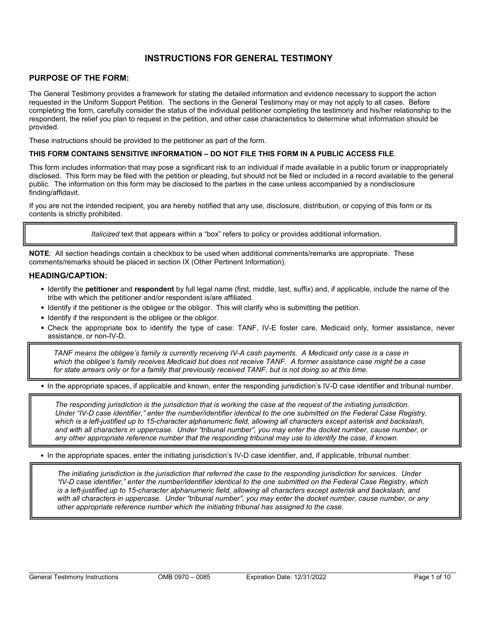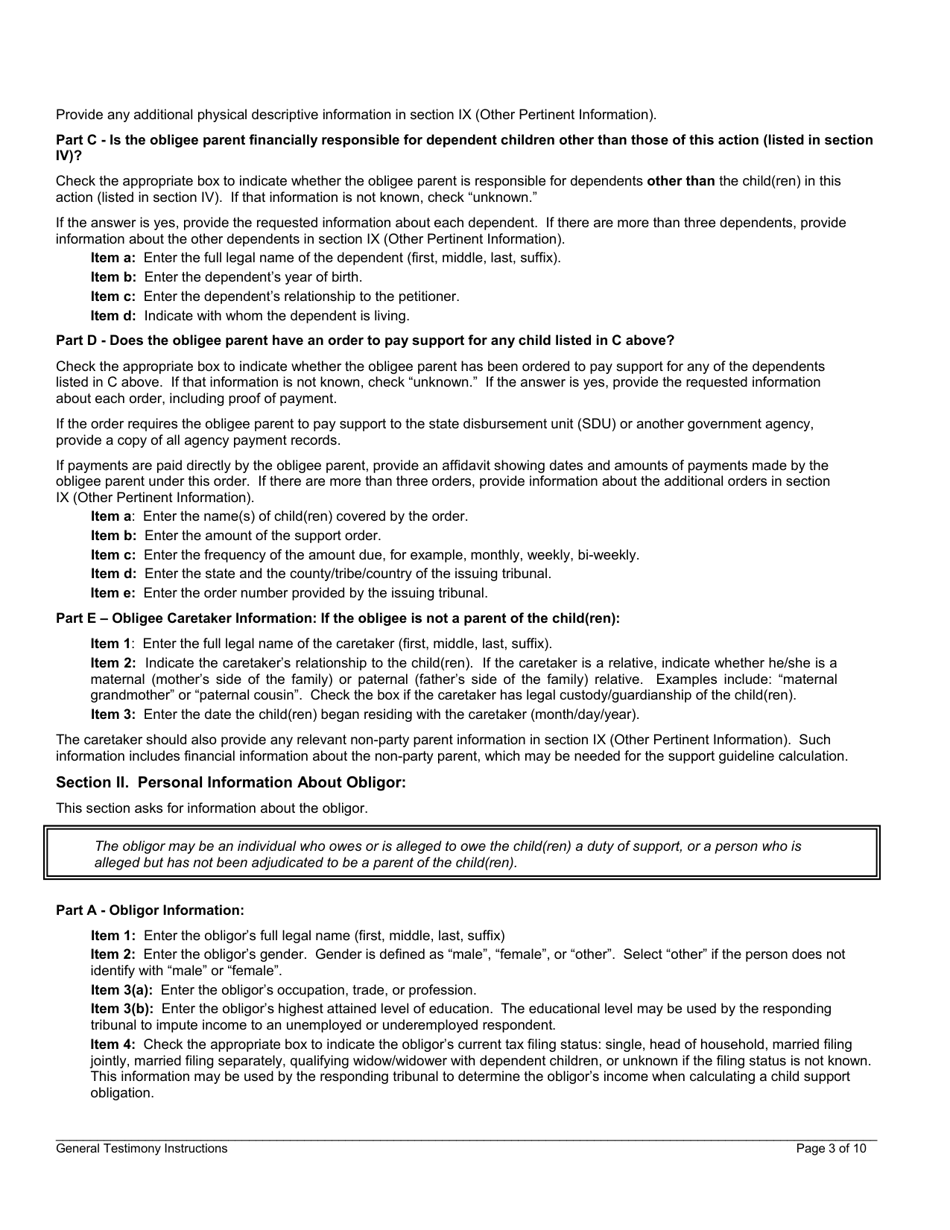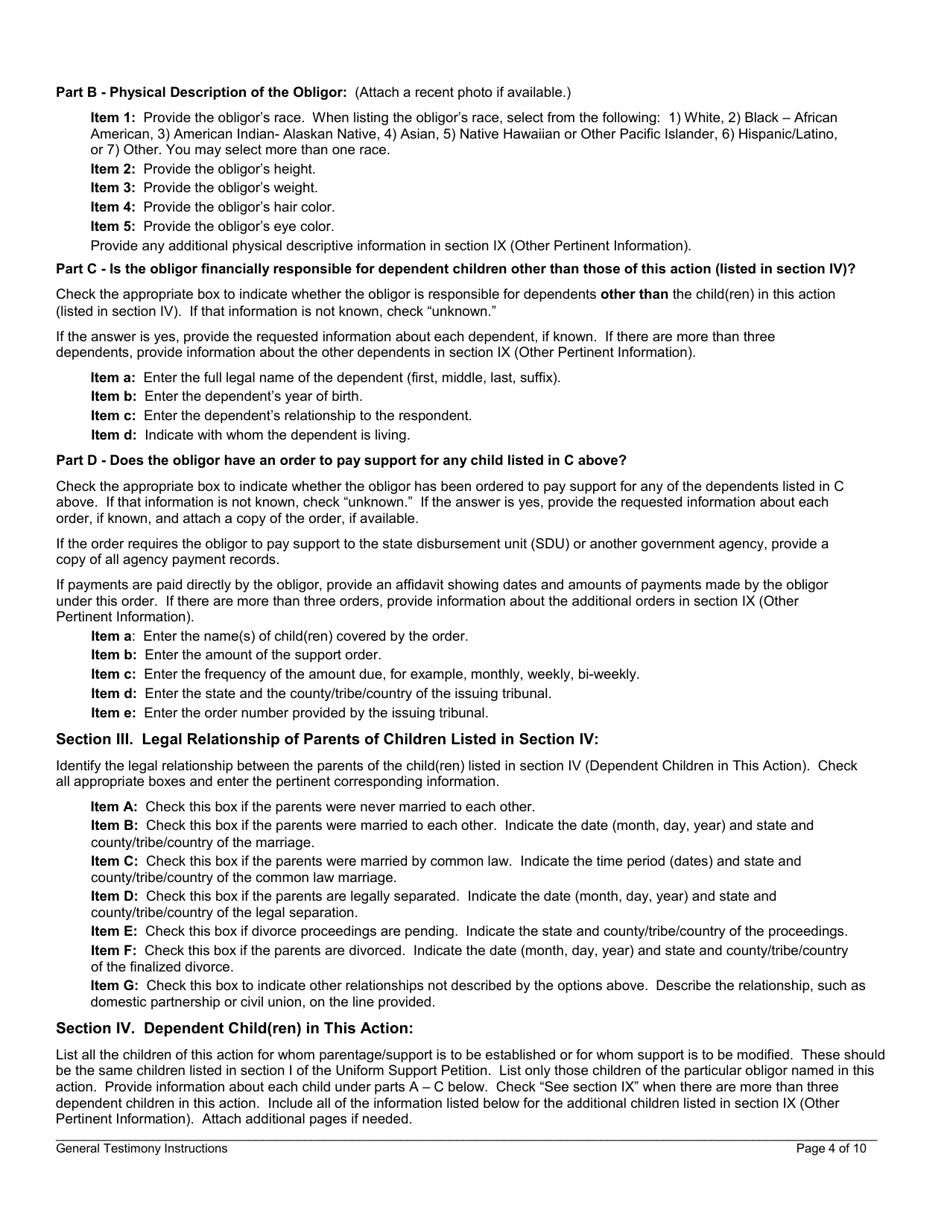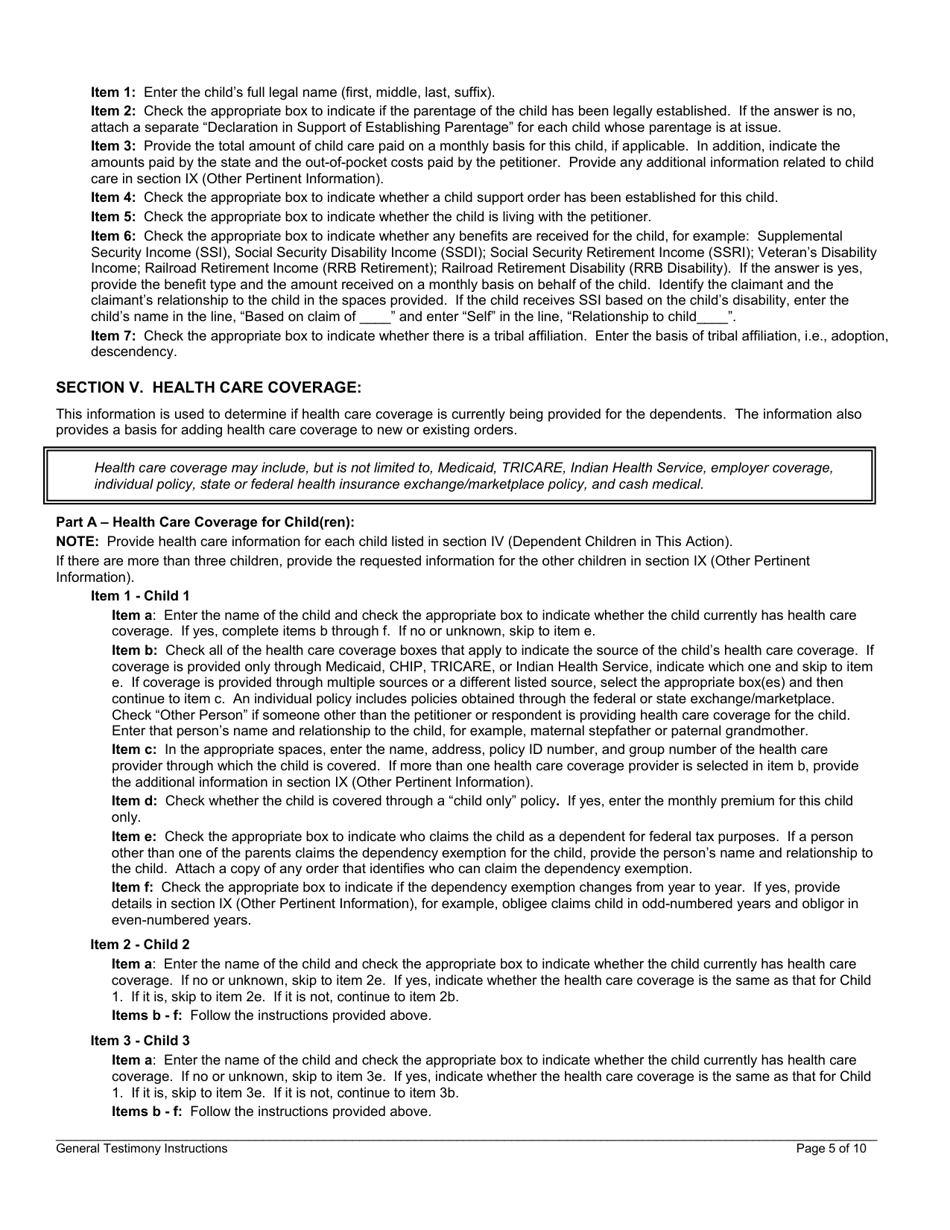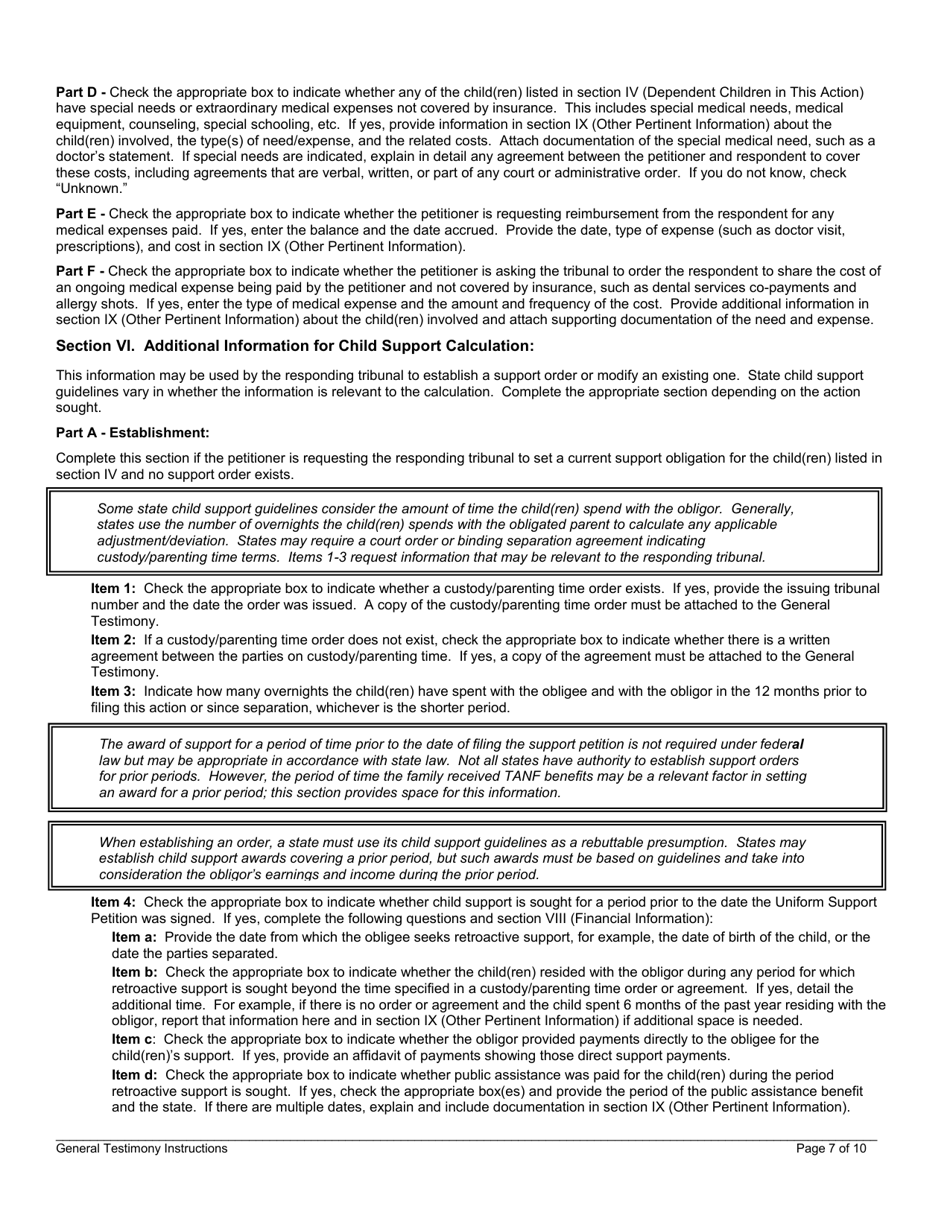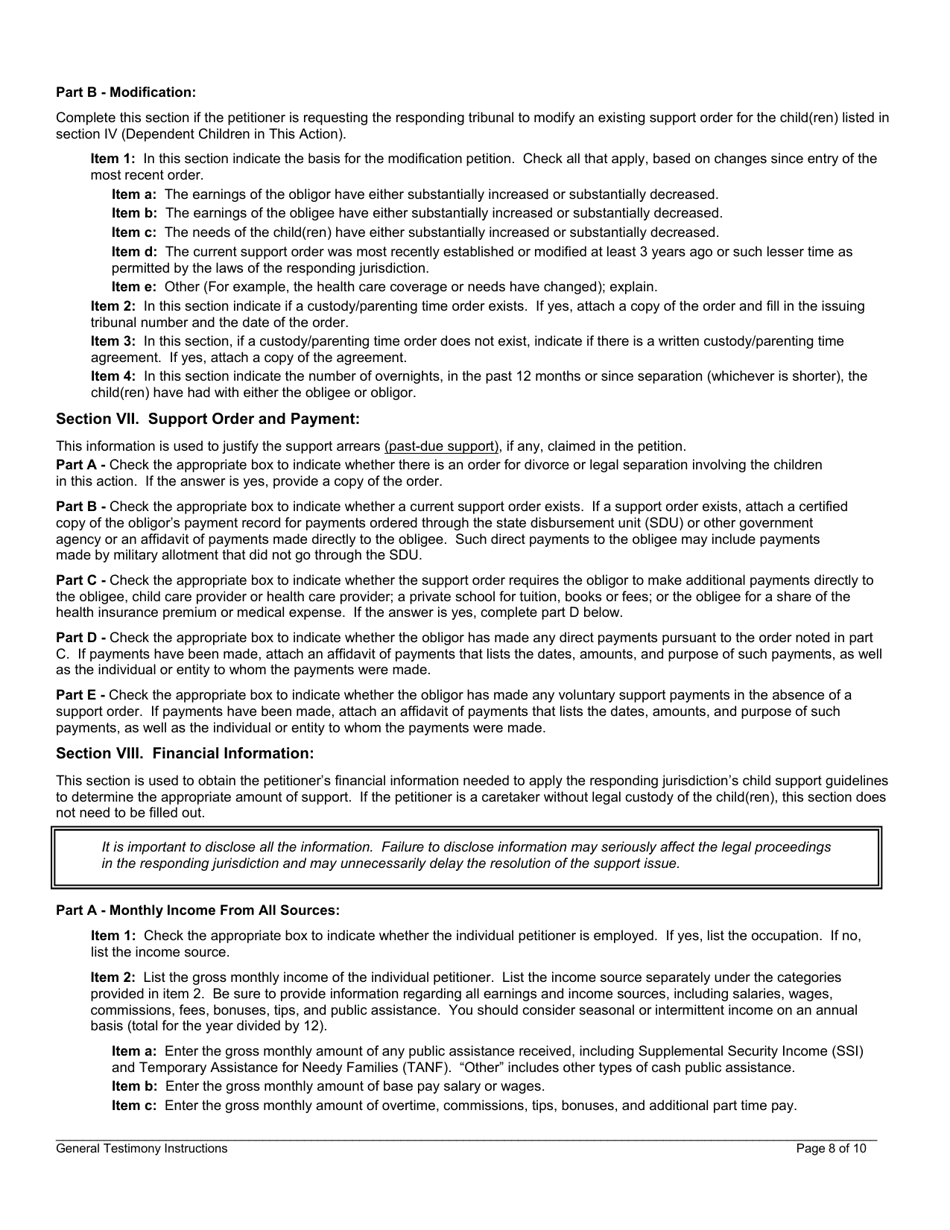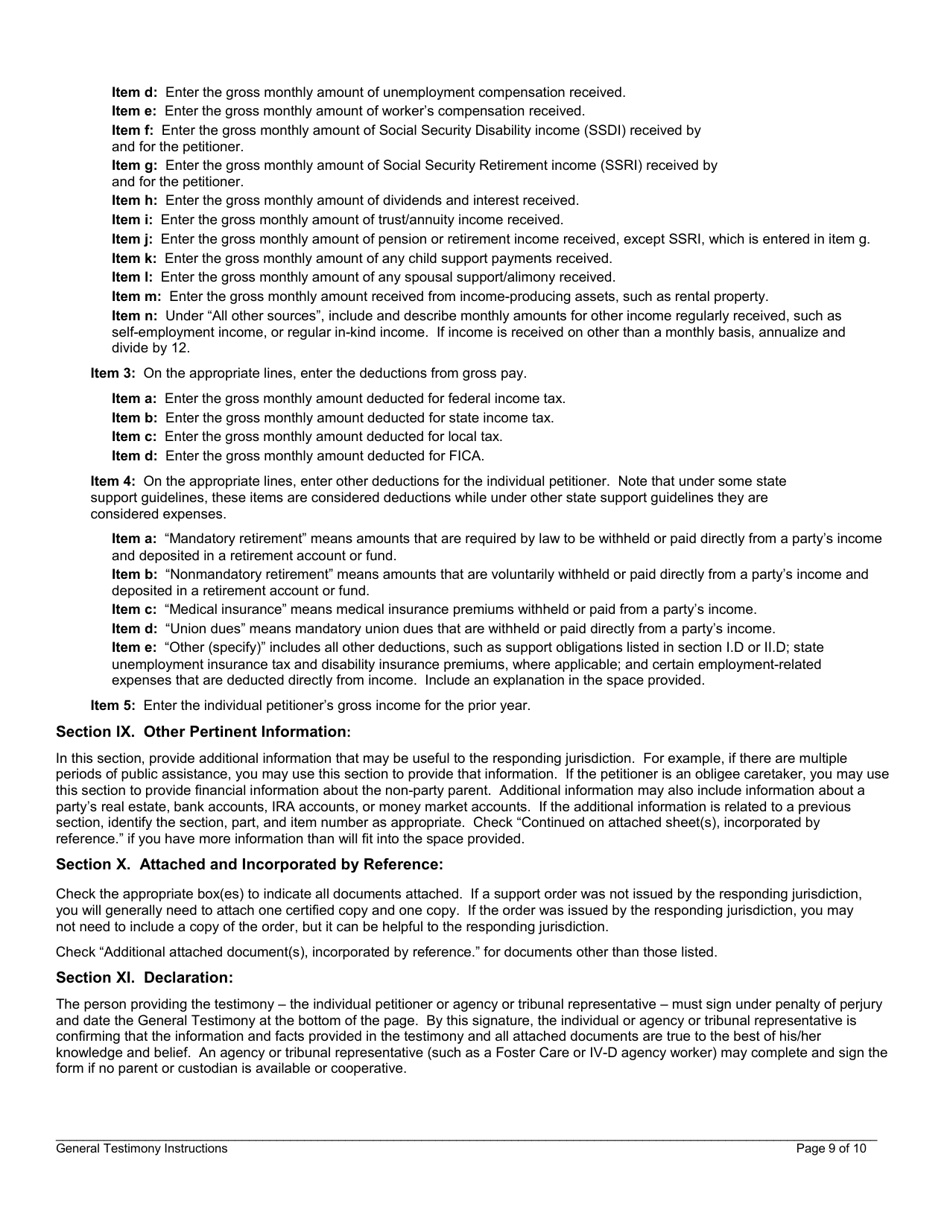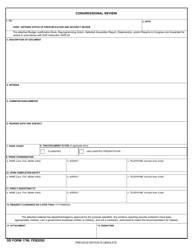Instructions for General Testimony
This document contains official instructions for General Testimony , a legal form released by the U.S. Department of Health and Human Services - Administration for Children & Families. The up-to-date fillable form can be downloaded through this link.
FAQ
Q: What is testimony?
A: Testimony is a formal statement or declaration made under oath or affirmation.
Q: What is a general testimony?
A: A general testimony refers to a statement given in a legal or formal setting, often in a court of law, that provides personal knowledge or information about a specific event or situation.
Q: Who can give a general testimony?
A: Any individual who has relevant information or personal knowledge about a case or situation can give a general testimony.
Q: What is the purpose of a general testimony?
A: The purpose of a general testimony is to provide facts, observations, or opinions that can help the trier of fact (such as a judge or jury) understand the truth or make a decision in a legal proceeding.
Q: Do I have to be an expert to give a general testimony?
A: No, you do not have to be an expert to give a general testimony. You can provide information based on your personal knowledge or observations.
Q: What should I include in my general testimony?
A: In your general testimony, you should include accurate and truthful information based on your personal knowledge. It is important to stay focused on the specific event or situation at hand.
Q: Do I need to prepare for giving a general testimony?
A: Yes, it is recommended to prepare for giving a general testimony. You should review any relevant documents, notes, or evidence that can support your statements.
Q: How should I present my general testimony?
A: When presenting your general testimony, you should speak clearly and concisely. Stick to the facts and avoid making assumptions or speculations.
Q: Can my general testimony be challenged?
A: Yes, during a legal proceeding, your general testimony may be subject to cross-examination by opposing parties. They can question the accuracy or credibility of your statements.
Q: What happens after giving a general testimony?
A: After giving a general testimony, the trier of fact will consider your statements along with other evidence and testimonies to make a decision or reach a verdict.
Instruction Details:
- These 10-page instructions are available for download in PDF;
- The latest version provided by the issuing department;
- Up-to-date, printable, and free to use.
Download your copy of the instructions by clicking the link below or browse more forms, instructions and templates in our online library.
